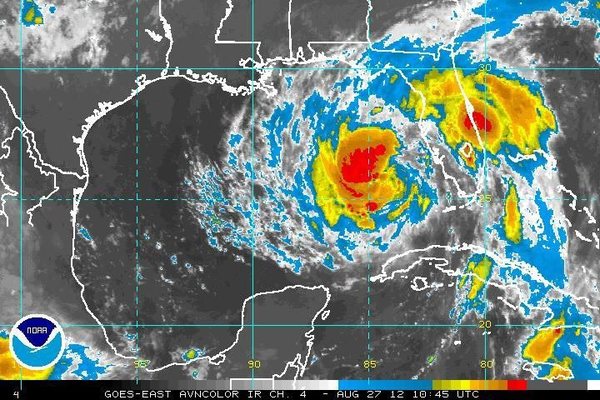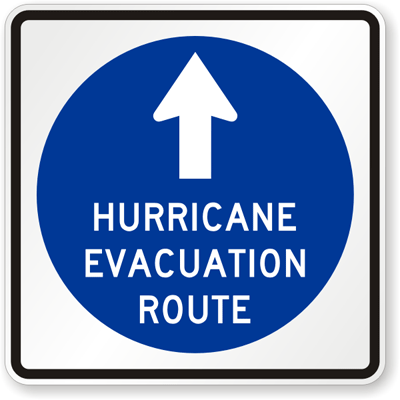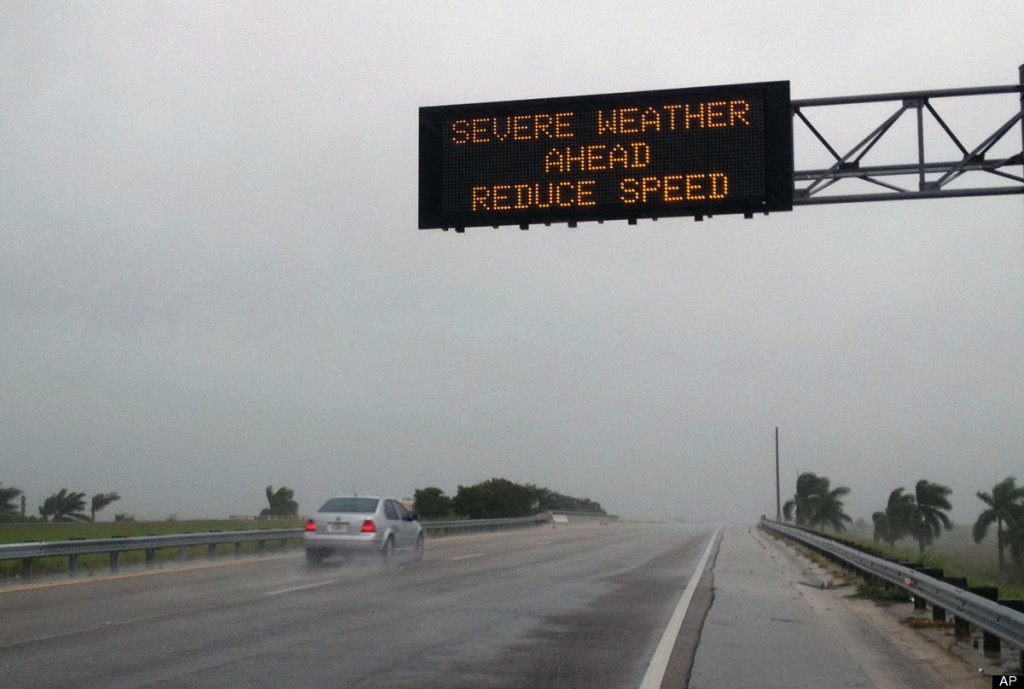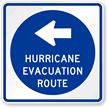Tropical Storm Isaac Forces Evacuations of Coastal Towns, Need for Safety

National Oceanic and Atmospheric Administration image of Tropical Storm Isaac (via LATimes.com)
August 28, 2012 – As Tropical Storm Isaac moves in, coastal cities are bracing for impact. Mississippi Governor Phil Bryant has declared a state of emergency as the storm could grow to a Category 1 Hurricane by the time it is expected to make landfall sometime Monday night or Tuesday morning. Evacuations for some areas of Louisiana, Mississippi and Alabama are in effect and FEMA officials are urging residents to take caution.
“As Tropical Storm Isaac continues towards Florida and the Gulf States, local residents need to monitor storm conditions and follow the direction of local officials,” said FEMA Administrator Craig Fugate in a statement.

Blue and white signage directs drivers on official evacuation routes (via SmartSign.com).
Those fleeing the storm are asked to leave as soon as possible. Here are a few things that drivers need to know, in order to handle their cars in the storm:
- Follow official evacuation routes. Highways specified for hurricane evacuation will be marked with official blue and white signage.
- Avoid flooded streets. Even water that looks safe to cross can damage a car’s engine and electrical systems, causing it to stall. This could ultimately lead to its occupants being stranded or even drowning.
- Take shelter. If the driver is having a difficult time controlling the car, it is best to simply look for shelter, off the road or in a parking garage.
- Pay attention to local conditions and directions issued by officials, where available.

A message warns drivers of severe weather on Sunday, Aug. 26, 2012 (via Huffington Post).
Unfortunately, sometimes, even where advanced public safety systems are available, they aren’t always in use. According to a local NBC affiliate in Lee County, Florida, where forced evacuations could mean potential chaos for fleeing residents, electronic road signs (like the one pictured above) may not be in use. With the cost of using these signs at over $5.5 million, local officials say they’ll reserve them for cases in which storm winds reach 45 miles per hour, and bridges are forced to close.
– H. Hunter













